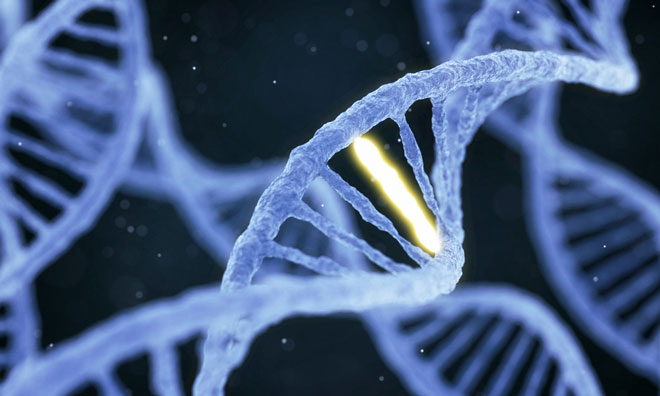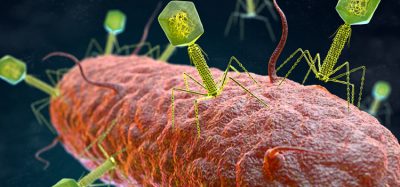Screening for genetic diseases & chromosomal defects with a single biopsy
Posted: 14 June 2017 | Niamh Marriott (Drug Target Review) | No comments yet
Couples who are undergoing pre-implantation genetic diagnosis (PGD) in order to avoid transmission of inherited diseases, such as Duchenne muscular dystrophy or cystic fibrosis, should also have their embryos screened for abnormal numbers of chromosomes at the same time, say Italian researchers.


By doing this, only embryos that are free not only of the genetic disease, but also of chromosomal abnormalities (aneuploidy), would be transferred to a woman’s womb, giving her the best chance of achieving a successful pregnancy, and avoiding the risk of implantation failure, miscarriage, or even live births that could be affected by conditions such as Down syndrome (in which there is an extra chromosome) or Turner syndrome (in which a girl has only one x chromosome rather than the normal two).
In a study reporting on the world’s largest series of double genetic tests, the researchers carried out simultaneous PGD and pre-implantation genetic screening (PGS) on cells taken in a single biopsy.
PGD and PGS
They took between five and ten cells from the outer layer of 1122 blastocysts (the early collection of cells that begin to form about five days after an egg has been inseminated with sperm and which go on to develop into an embryo) and, after PGD and PGS, 218 blastocysts were transferred to the women’s wombs, resulting in 99 pregnancies and the birth of 70 healthy babies by January 2017.
Pregnancy rate
This is a pregnancy rate of 49%, which is higher than the average clinical pregnancy rate of between 22-32% reported in the general population of couples undergoing in vitro fertilisation (IVF). At the time of writing the paper, 13 further pregnancies were ongoing and now 12 have resulted in the birth of healthy babies, while one miscarried. This gives a delivery rate of 38.6%. A total of 91 healthy blastocysts remain frozen awaiting transfer.
Dr Maria Giulia Minasi, laboratory director at the Centre for Reproductive Medicine, European Hospital, Rome, said:
“Importantly, we found that while 55.7% of the biopsied blastocysts did not carry a genetic disease or changes in the structures of chromosomes, only 27.5% of them also had the right number of chromosomes.
Without performing pre-implantation genetic screening for aneuploidy, 316 blastocysts, which appeared to be healthy but had abnormal numbers of chromosomes, could have been transferred, leading to implantation failures, miscarriages or sometimes live births of babies affected by aneuploidy. For the couples involved, and particularly the women, these outcomes can be emotionally devastating.”
As a result of their findings, Dr Minasi and her colleagues believe that when couples undergo PGD, they should also have PGS.
Dr Ermanno Greco, director of the Centre for Reproductive Medicine, said:
“Patients who have the risk of transmitting genetically inheritable diseases to their offspring need to have preimplantation genetic diagnosis and therefore a biopsy of the blastocyst has to be performed.
We strongly believe that in these cases it should be mandatory to analyse also the chromosomal status of the blastocyst, because it is possible to perform both analyses on the same biopsy sample, without performing other dangerous and invasive procedures on the embryo, or, indeed, on the growing foetus in the womb.”
Both PGD and PGS are techniques that are carried out in fertility centres already, and so it would be possible for clinics to implement the researchers’ recommendations now.
Screening for genetic abnormalities
However, Dr Minasi said that couples should be counselled carefully so that they understand that by screening for both genetic and chromosomal abnormalities, there will be more occasions when it is not possible to transfer an embryo.
“We found a higher than expected rate of cycle cancellation, with 40% of cycles not having transferable blastocysts available. This can happen when there is a poor fertilisation rate or poor embryo development, and also when there are no healthy blastocysts available for transfer after PGD and PGS,” she said. This cancellation rate compares with a rate of 12.2% in 2016 when the combination of PGD and PGS was not performed.
Performing PGD and PGS is not technically difficult. The woman’s egg is inseminated with sperm via intracytoplasmic sperm injection (ICSI) and then cultured in the laboratory. When the blastocyst has started to form and the inner cell mass, which eventually develops into the foetus, has become clearly identifiable, the fertility specialists extract 5-10 cells from the outer layer (the trophectoderm). This procedure does not impair the implantation potential of the developing blastocyst, unlike more invasive biopsies. In this study, the researchers sent the cells from the Centre for Reproductive Medicine, where they were treating the women, to the GENOMA Molecular Genetics Laboratory in Rome for the genetic analysis.
“Performing the analyses on cells taken from only one biopsy avoids the need for a second biopsy that can be potentially dangerous to the blastocyst and could influence the embryo’s developmental and implantation potential,” explained co-author, Dr Francesco Fiorentino, who is director of the GENOMA laboratory.
Dr Minasi concluded: “The European Society of Human Reproduction and Embryology PGD Consortium has reported that only 28% of embryos transferred after PGD lead to pregnancy. Our study demonstrates that PGD/PGS-based IVF is able to increase the embryo implantation rate up to nearly 48% and in this study we obtained an overall clinical pregnancy rate of 49% per embryo transfer.”
Related topics
Biologics, Gene Testing, Genetic Analysis, Genomics, in vitro fertilisation (IVF)
Related conditions
Cystic fibrosis, Duchenne muscular dystrophy
Related organisations
GENOMA Molecular Genetics Laboratory
Related people
Dr Ermanno Greco, Dr Maria Giulia Minasi







